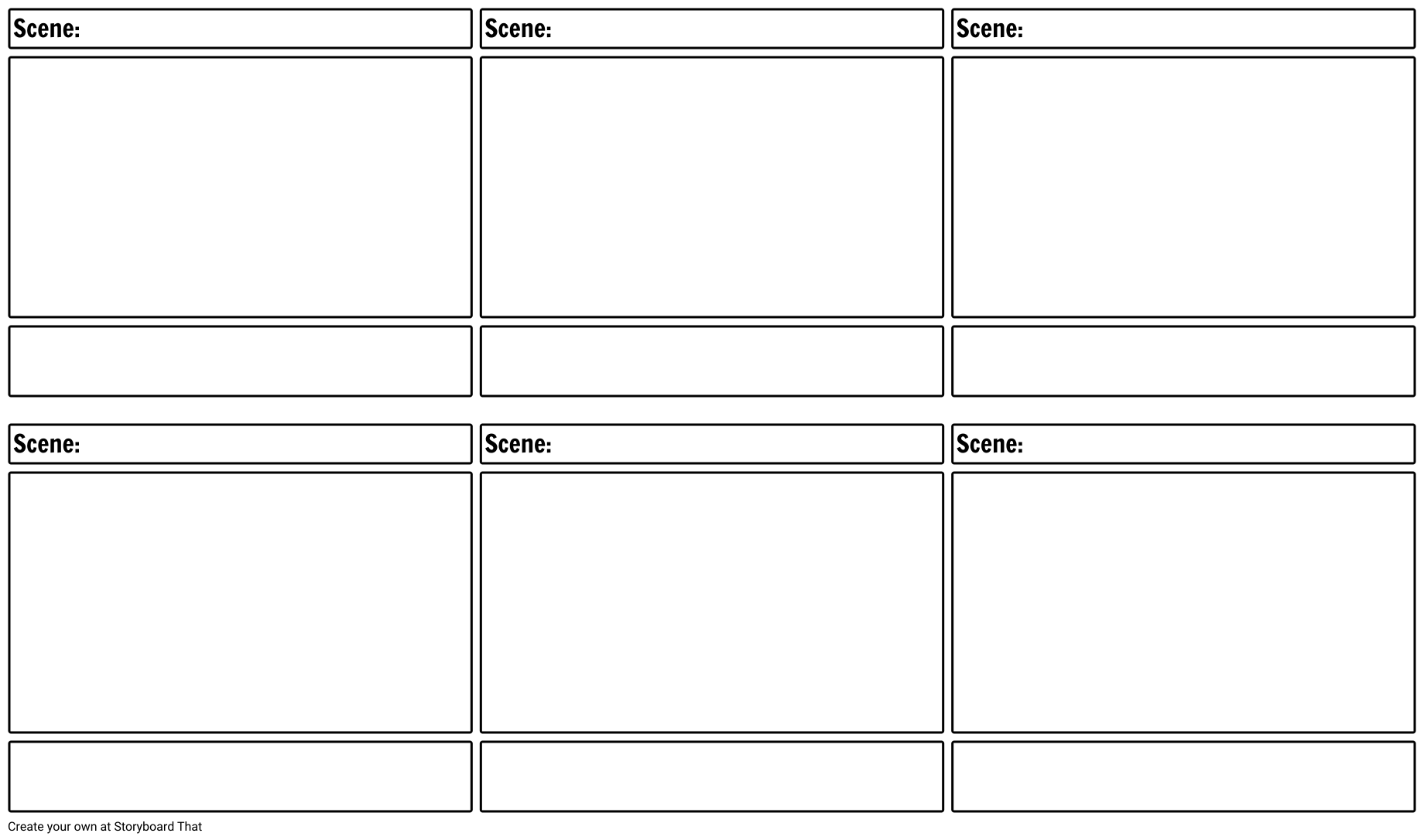If you’ve ever watched a great movie, you probably noticed how each scene is perfectly crafted and seamlessly flows into the next. This is due to the meticulous planning that goes into creating a film, and the tool that helps bring it all together is called a storyboard.
What is a Storyboard?
 A storyboard is a visual representation of a film, TV show, or any other kind of video. It’s made up of a series of drawings or images that illustrate each scene and detail what will happen in it. Essentially, it’s a comic book version of the video.
A storyboard is a visual representation of a film, TV show, or any other kind of video. It’s made up of a series of drawings or images that illustrate each scene and detail what will happen in it. Essentially, it’s a comic book version of the video.
Storyboards are an essential tool for filmmakers, as they help to plan out every shot and ensure that the final product is cohesive and effective. They also allow for adjustments to be made before filming even begins, which can save time and money in the long run.
How is a Storyboard Made?
 Creating a storyboard is a collaborative process between the director, the cinematographer, and the storyboard artist. The director will come up with a vision for the film and work with the cinematographer to determine the camera angles and movements that will be used in each scene. The storyboard artist then takes this information and translates it into a visual format.
Creating a storyboard is a collaborative process between the director, the cinematographer, and the storyboard artist. The director will come up with a vision for the film and work with the cinematographer to determine the camera angles and movements that will be used in each scene. The storyboard artist then takes this information and translates it into a visual format.
The storyboard artist will first sketch out the basic layout of each scene, including the placement of actors and props, as well as the camera angles and movements. Once this is approved by the director and cinematographer, the artist will fill in the details of each shot, including lighting, facial expressions, and any special effects that will be used.
Why is a Storyboard Important?
 There are several reasons why a storyboard is important in the filmmaking process:
There are several reasons why a storyboard is important in the filmmaking process:
- It saves time and money: By planning out every shot in advance, the filmmakers can avoid costly reshoots and revisions.
- It ensures cohesion: A storyboard helps to keep the film’s visual style consistent and prevents scenes from feeling disjointed or out of place.
- It facilitates communication: A storyboard allows everyone involved in the film to understand the director’s vision and work together towards a common goal.
- It sparks creativity: A well-executed storyboard can inspire the filmmakers and lead to new ideas and approaches.
Overall, a storyboard is a crucial tool for anyone involved in the filmmaking process, and can greatly improve the quality and efficiency of the final product.
Creating Your Own Storyboard
 Whether you’re a professional filmmaker or just starting out, creating your own storyboard is a great way to plan out your video and ensure that it turns out exactly as you envision it.
Whether you’re a professional filmmaker or just starting out, creating your own storyboard is a great way to plan out your video and ensure that it turns out exactly as you envision it.
There are a few basic steps to creating a storyboard:
- Write the script: Before you can create a storyboard, you need to have a clear idea of what will happen in your video. Write a detailed script that includes all the dialogue, actions, and camera movements.
- Break down the script: Go through the script and divide it into individual scenes. Each scene should be self-contained and have a clear beginning, middle, and end.
- Sketch out the storyboard: Using a blank storyboard template, sketch out each scene. Focus on the composition of each shot, as well as the placement of actors and props.
- Add details: Once you have the basic layout of each scene, go back and add details like lighting, facial expressions, and any special effects.
- Get feedback: Once you have a complete storyboard, show it to others and get their feedback. This can help you spot any issues and make adjustments before you start filming.
By following these steps, you can create a professional-looking storyboard that will help guide you through the filmmaking process and ensure that your final product is a success.
Conclusion
 A storyboard is a powerful tool for filmmakers that can greatly improve the quality and efficiency of the final product. By creating a detailed visual representation of each scene, filmmakers can plan out every shot and ensure that the film has a cohesive look and feel. Whether you’re a professional filmmaker or just starting out, creating your own storyboard is a great way to bring your vision to life and achieve your filmmaking goals.
A storyboard is a powerful tool for filmmakers that can greatly improve the quality and efficiency of the final product. By creating a detailed visual representation of each scene, filmmakers can plan out every shot and ensure that the film has a cohesive look and feel. Whether you’re a professional filmmaker or just starting out, creating your own storyboard is a great way to bring your vision to life and achieve your filmmaking goals.